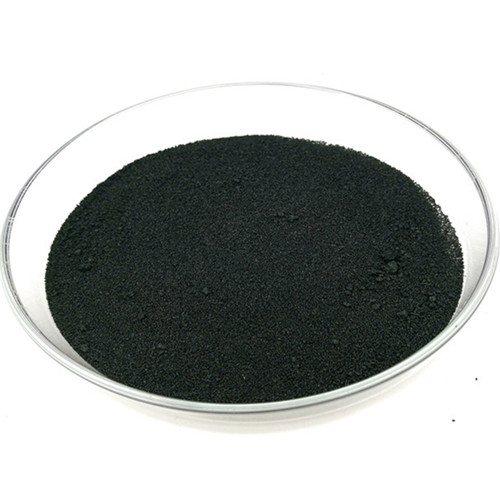

As a typical two-dimensional material, graphene has been widely used in various fields and is highly sought after by the scientific and industrial circles. Therefore, what is a two-dimensional material. In short, two-dimensional materials refer to materials in which electrons can move freely (planar motion) on two-dimensional non-nanoscale (1-100 nm), such as graphene, boron nitride, transition metal compounds (disulfides) ), molybdenum, tungsten disulfide, tungsten disilicide, black phosphorus, etc.
The application fields of two-dimensional materials are very wide. Combined with the author's previous introduction, examples are as follows: spintronics, printed electronics, flexible electronics, microelectronics, memory, processors, super lenses, terahertz, super capacitors, solar cells, safety labels. , Quantum dots, sensors, semiconductor manufacturing, NFC, medical, etc.
In addition to graphene,molybdenum disulfide (MoS2) as a typical two-dimensional material also deserves our attention. Molybdenum disulfide is composed of molybdenum atoms and sulfur atoms, and the thickness is only three atoms. The thickness of graphene is almost the same, but the band gap of molybdenum disulfide is 1.8 eV, while graphene has no band gap. In this regard, the author once introduced that the research team of the Berkeley Laboratory of the US Department of Energy has accurately measured the band gap of the semiconductor two-dimensional material molybdenum disulfide (MoS2) and revealed the powerful tuning mechanism and its relationship. The relationship between the electronic and optical properties of two-dimensional materials.
In addition, in terms of electron mobility (the moving speed of electrons in a flat plate), the electron mobility of molybdenum disulfide is about 100 cm 2 / vs (that is, 100 electrons per square centimeter per volt), although it is much lower than that of crystals. . The electron transfer rate of silicon is 1400 cm2/vs, but compared with amorphous silicon and other ultra-thin semiconductors, the transfer rate of silicon is better.
The unique sandwich structure of molybdenum disulfide (MoS2) gives it excellent lubrication, catalysis and other properties, and has great potential in the fields of friction, lubrication and catalysis. Based on the lubrication mechanism of molybdenum disulfide, research on its surface modification is reviewed, including surface organic coating, precipitation reaction coating, intercalation modification, etc.; at the same time, the current application fields of molybdenum disulfide are summarized, such as Self-lubricating thin layer, intercalation battery, high lubricity coating, etc. Catalysts, etc., and look forward to its future research directions.

Overview of MoS2 friction modifier molybdenum disulfide
The unique sandwich structure of molybdenum disulfide (MoS2) gives it excellent lubrication, catalysis and other properties, and has great potential in the fields of friction, lubrication and catalysis. Based on the lubrication mechanism of molybdenum disulfide, research on its surface modification is reviewed, including surface organic coating, precipitation reaction coating, intercalation modification, etc.; at the same time, the current application fields of molybdenum disulfide are summarized, such as Self-lubricating thin layer, intercalation battery, high lubricity coating, etc. Catalysts, etc., and look forward to its future research directions.
Application of MoS2 friction modifier molybdenum disulfide
Molybdenum disulfide is mainly used in lubricating oil and grease to improve its wear resistance, abrasion resistance and extreme pressure performance. Due to its excellent physical and chemical properties, such as adjustable band gap, large specific surface area, abundant edge parts, and good chemical stability, nano-molybdenum disulfide is used in photoelectric devices, catalysis, lithium ion batteries and supercapacitors, and lubrication fields. The huge application value is one of the hotspots of continuous research.
Molybdenum disulfide is an important solid lubricant, especially suitable for high temperature and high pressure. It is also diamagnetic, can be used as a linear photoconductor and a semiconductor with P-type or N-type conductivity, and has rectification and energy functions. Molybdenum disulfide can also be used as a catalyst for the dehydrogenation of complex hydrocarbons. It is also known as the king of advanced solid lubricants. Molybdenum disulfide is a solid powder made by changing the molecular structure of natural molybdenum concentrate after chemical purification. The color of the product is black, silver gray, metallic luster, smooth to the touch, and insoluble in water. The product has the following advantages: good dispersibility and non-sticking. It can be added to various greases to form a non-sticky colloidal state,
The main function of molybdenum disulfide used in friction materials is to reduce low-temperature friction, increase high-temperature friction and have a small ignition loss. It is volatile in friction materials.
Anti-friction: The particle size of the supersonic jet crushed molybdenum disulfide is 325-2500 mesh, the particle hardness is 1-1.5, and the friction coefficient is 0.05-0.1, so it can reduce friction when used in friction materials;
Increase friction: Molybdenum disulfide is not conductive, and there is a copolymer of molybdenum disulfide, molybdenum trisulfide and molybdenum trioxide. When the temperature of the friction material rises sharply due to friction, the molybdenum trioxide particles in the copolymer expand with the temperature, thereby playing a role. Increase the effect of friction;
Anti-oxidation: Molybdenum disulfide is prepared through chemical purification and comprehensive reaction, and its PH value is 7-8, which is weakly alkaline. It covers the surface of the friction material to protect other materials and prevent them from being oxidized, especially to prevent other materials from falling off and increase adhesion;
The price of MoS2 friction modifier molybdenum disulfide
The price of MoS2 friction modifier molybdenum disulfide will vary randomly with factors such as production cost, transportation cost, international situation, and market supply and demand of the price of MoS2 friction modifier molybdenum disulfide. Tanki New Materials Co.,Ltd. aims to help various industries and chemical wholesalers find high-quality, low-cost nanomaterials and chemicals by providing a full set of customized services. If you are looking for MoS2 friction modifier molybdenum disulfide price, please feel free to send an inquiry to get the latest price of MoS2 friction modifier molybdenum disulfide price.
Suppliers of MoS2 friction modifier molybdenum disulfide
Tanki New Materials Co.,Ltd is a supplier of MoS2 friction modifier molybdenum disulfide and has extensive experience in the performance, application and cost-effective manufacturing of advanced and engineered materials. Additives, lithium stearate, nano copper and nano oil additives), high-purity targets, functional ceramics and structural devices, and provide OEM services.
| Physical and Chemical Data of Molybdenum Disulfide MoS2 | |
| Item | Analysis |
| Purity | ≥98.5% |
| Fisher particle D50, μm | 3-4 |
| Total Insoluble,% | 0.5 |
| Iron, % | 0.25 |
| Water, % | 0.1 |
| Oil, % | 0.2 |
| Silica, % | 0.2 |
| Acid, % | 0.5 |
| CAS No. | 1317-33-5 |
| EINECS No. | 215-263-9 |
| Compound Formula | MoS2 |
| Molecular Weight | 160.07 |
| Appearance | Black Powder |
| Melting Point | 1185 °C |
| Density | 4.80-5.0g/cm3 |
| Coefficient of friction | 0.05-0.09 |
| Solubility in H2O | Insoluble |
| Other Names | molybdenum sulfide, molybdenum disulphide, MoS2 powder, moly disulfide |
Tanki New Materials Co.Ltd Aims to help All industries and Chemical Wholesalers to find high quality, cheap price nano materials and chemicals by providing turn-key customize manufacturing services.
As a trust-worthy
global nano-materials and chemicals manufacturer, Tanki New Materials Co.Ltd has been successfully supplying big and small brands with customized nano materials and chemical products in bulk or small quantities.
Tanki New
Materials Co.Ltd has rich experiences in the properties, applications, and cost-effective manufacturing of advanced and engineered materials. The company has successfully developed a series of powder materials (including oxides, carbides,
nitrides, single metal, etc.), high-purity targets, functional ceramics, and structural devices. OEM service is available.
Our innovative, high-performance materials are widely used in many industries, including but not limited
to the automotive, electrical, electronics, information technology, petrochemical, oil, ceramics, paint, metallurgy, solar energy, and catalysis.
Based in the center of China, the company has rich resources and chemical product
manufacuturing chains to make sure your cost remain as low as your specifications demand.
The company provides following products such as providing super high quality chemicals and Nano materials such as graphite powder,
boron powder , zinc sulfide , nitride powder, Calcium nitride, Ca3N2, 3D printing powder, and so on.

Ask a quote for the latest price and one of our team members will respond as soon as possible. Fields marked with * are required.
